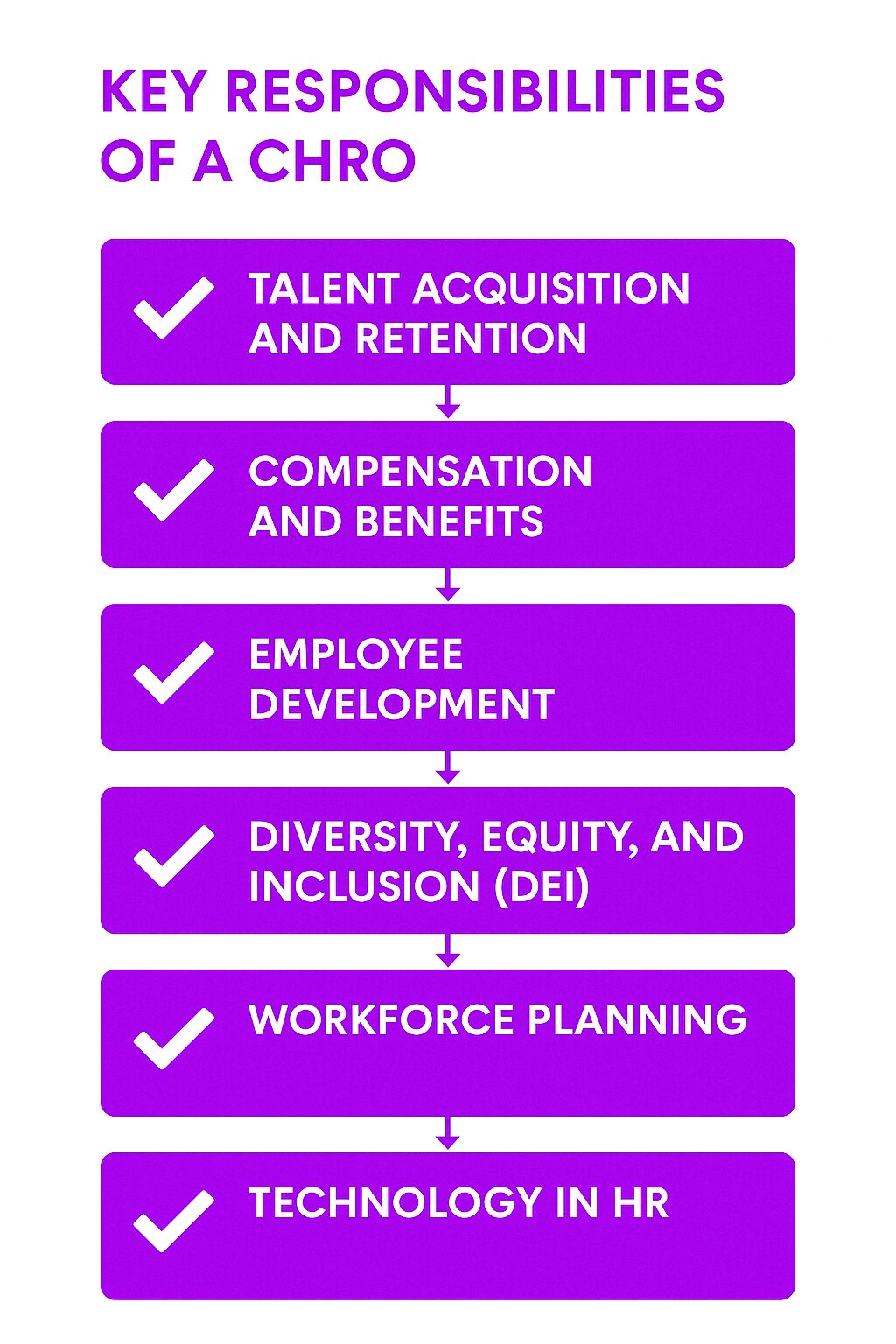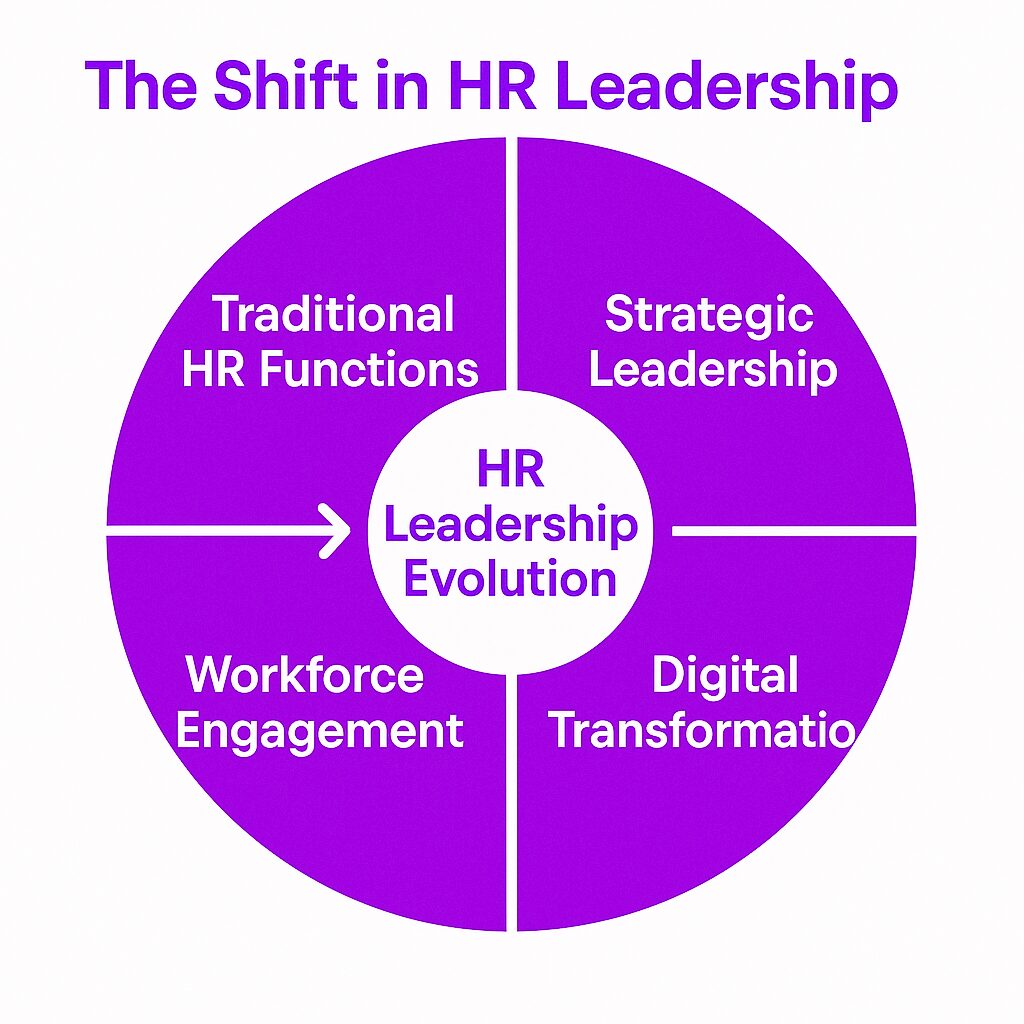What is a Chief Human Resources Officer?
A chief human resource officer (CHRO) is a top executive responsible for leading an organization’s human resources strategy. This role has grown beyond traditional HR functions like hiring and payroll. The CHRO now plays a critical role in shaping company culture, employee engagement, and workforce planning. Companies rely on CHROs to ensure their teams are engaged, productive, and aligned with business goals.
The Role of a CHRO
The CHRO oversees all aspects of workforce management. This includes talent acquisition, employee development, compensation, and diversity initiatives. They work closely with CEOs and other executives to ensure that people strategies support business objectives. The CHRO also helps companies navigate workplace challenges, from compliance to digital transformation in HR.
Key Responsibilities
-
Talent Acquisition and Retention – The HR department, led by the CHRO, is responsible for hiring top talent and keeping employees engaged.
-
Compensation and Benefits – Structuring competitive pay and incentives.
-
Employee Development – Creating training and leadership programs.
-
Diversity, Equity, and Inclusion (DEI) – Building an inclusive workplace.
-
Workforce Planning – Forecasting hiring needs and managing HR budgets.
-
Technology in HR – Leveraging tools like AI for hiring and analytics.
-
Compliance and Risk Management – Ensuring legal compliance and handling workplace disputes.
Why Companies Need a CHRO
People drive business success. A skilled and engaged workforce leads to better performance, innovation, and customer satisfaction. Companies that invest in strong HR leadership create environments where employees thrive. The CHRO ensures that the organization attracts, retains, and develops talent to support long-term growth by aligning HR policies with the executive management team to meet broader business objectives.
The Shift in HR Leadership
HR has evolved from a support function to a strategic department. Today, HR leaders influence business decisions, corporate culture, and digital transformation through strategic leadership. Companies that ignore the role of HR in business strategy risk losing top talent and falling behind competitors.
How CHROs Impact Business Growth
-
Reduce turnover by improving employee satisfaction.
-
Increase productivity through effective workforce planning and a robust HR strategy.
-
Strengthen employer branding to attract top talent.
-
Enhance compliance to minimize legal risks.
The Challenges of Being a CHRO
While the CHRO role is critical, it comes with significant challenges within the human resources department.
Common Issues
-
Balancing Strategy and Operations – Managing both long-term planning and daily HR tasks.
-
Adapting to Remote Work – Building culture and engagement in hybrid work environments.
-
Keeping Up with Changing Labor Laws – Ensuring compliance with evolving regulations.
-
Aligning HR and Business Goals – Proving HR’s impact on profitability and growth.
-
Managing Workplace Conflict – Addressing employee disputes and fostering a healthy work environment.
How CHROs Overcome These Challenges
-
Data-Driven Decisions – Using analytics to measure employee engagement and performance.
-
Continuous Learning – Staying updated on HR trends and legal changes.
-
Cross-Department Collaboration – Working with finance, IT, and marketing to align HR goals with business needs.
-
Proactive Employee Engagement – Implementing programs to keep employees motivated and connected.
Key Areas of HR Leadership
Talent Acquisition and Workforce Planning
Human resource management is essential for business success. CHROs ensure that hiring aligns with company needs and future growth. Workforce planning involves forecasting hiring demands, developing succession plans, and building a strong employer brand.
Employee Development and Training
A company’s success depends on how well its employees grow. CHROs lead training programs, mentorship initiatives, and leadership development efforts to enhance leadership skills. Investing in employee growth improves retention and performance.
Compensation and Benefits
A strong compensation strategy helps attract and retain top talent. CHROs design salary structures, bonuses, and benefits that keep employees satisfied while managing company budgets effectively.
Workplace Culture and Employee Experience
Culture shapes how employees feel about their jobs and influences retention. CHROs play a key role in fostering an inclusive and engaging work environment. They ensure that employees feel valued and motivated.
HR Technology and Digital Transformation
HR leaders with a background in business administration use technology to streamline processes and enhance employee experiences. Tools like AI-powered recruiting, automated onboarding, and HR analytics improve decision-making and efficiency.
Human Capital Management
Human Capital Management (HCM) is a strategic approach to managing an organization’s workforce, focusing on maximizing the value of its human resources. A Chief Human Resources Officer (CHRO) plays a critical role in HCM, overseeing the development and implementation of HR strategies that align with the organization’s business objectives. HCM involves managing various aspects of the employment process, including talent acquisition, talent management, performance management, employee relations, and succession planning.
Effective HCM requires a deep understanding of the organization’s business and industry, as well as advanced social skills, including active listening, clear communication, and working well with people from different backgrounds. A CHRO must be able to communicate effectively with employees and stakeholders to ensure a smooth transition and drive business growth.
Best Practices for CHROs
-
Understand Employee Needs – Gather feedback through surveys and engagement tools.
-
Develop a Strong Employer Brand – Build a reputation as a great place to work.
-
Leverage HR Technology – Use AI, automation, and analytics to enhance efficiency.
-
Ensure Compliance – Stay up-to-date with labor laws and workplace policies.
-
Promote a Positive Work Culture – Encourage transparency, recognition, and diversity.
The Future of the CHRO Role
As workplaces evolve, the CHRO’s role will continue to expand. Future trends include:
-
Greater Focus on Employee Well-being – Mental health and work-life balance will remain priorities.
-
Increased Use of People Analytics – Data will drive more HR decisions.
-
Advancements in AI and Automation – AI will streamline recruitment and training.
-
More Strategic HR Leadership – CHROs will play an even bigger role in business planning.
Real-World Examples
-
Google: Focuses on employee engagement through learning programs and workplace culture.
-
Salesforce: Prioritizes diversity and inclusion, making HR a strategic driver.
-
Microsoft: Uses HR analytics to predict employee trends and improve retention.
Conclusion
The Chief Human Resources Officer is essential in shaping an organization’s people strategy. By focusing on talent, culture, and compliance, CHROs help businesses grow and stay competitive. Companies that prioritize strong HR leadership will build better workplaces and drive long-term success.








